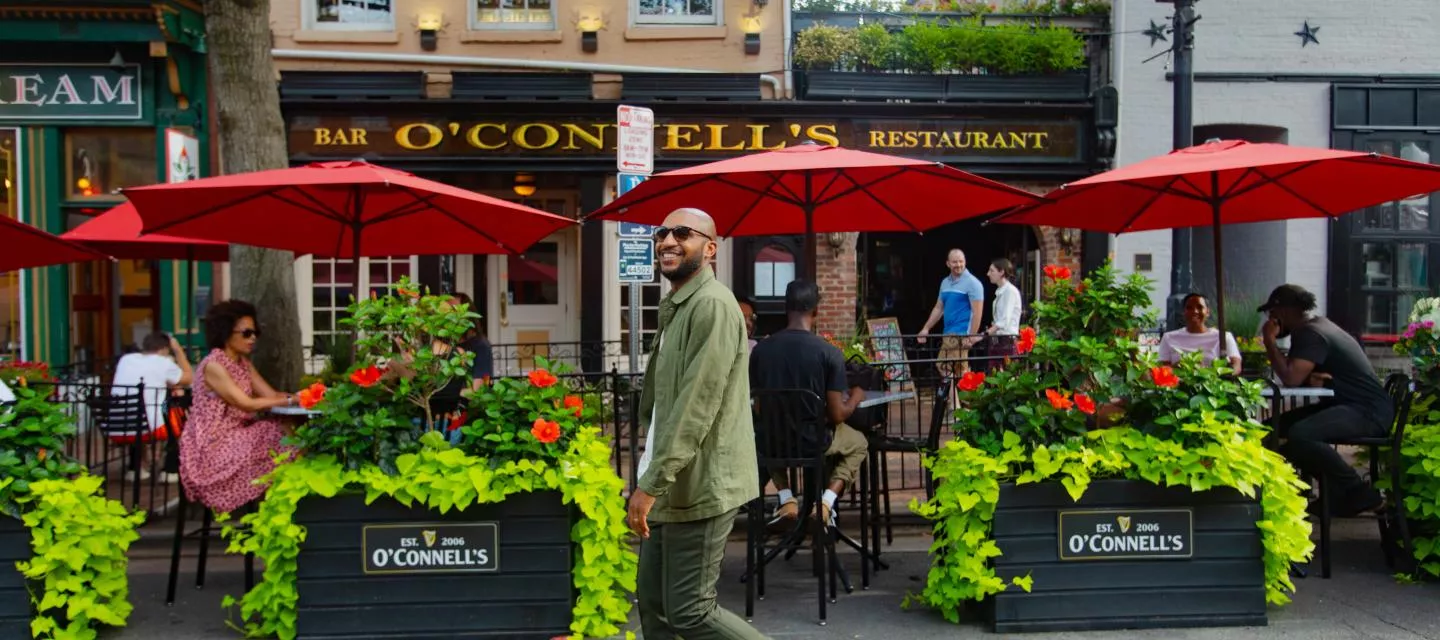From a self-taught mathematician who mapped out the nation’s capital to abolitionist sisters who partnered with Frederick Douglass to the first Black player in the NBA, African American changemakers have shaped the history of Alexandria, VA and the United States. Minutes from D.C. and the Smithsonian National Museum of African American History and Culture, Alexandria offers tours, markers and more to lead you through sites and stories both harrowing and hopeful. Start exploring Alexandria’s history for a better understanding of today.
1. Explore Key Sites on a Self-Guided Driving Tour
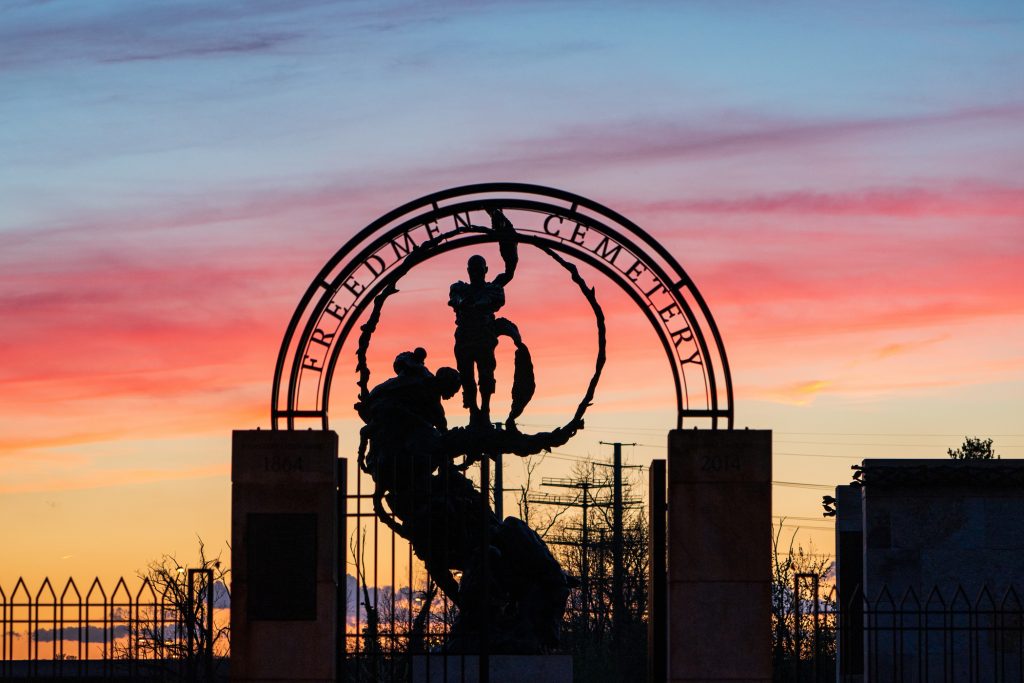
Use our eight-site driving tour to explore the African American history that shaped Alexandria and the United States, from D.C.’s onetime southern cornerstone laid by Benjamin Banneker to the site of one of the nation’s earliest sit-ins and more. Find parking information for each site so you can linger where you feel moved.
2. Visit Freedom House Museum
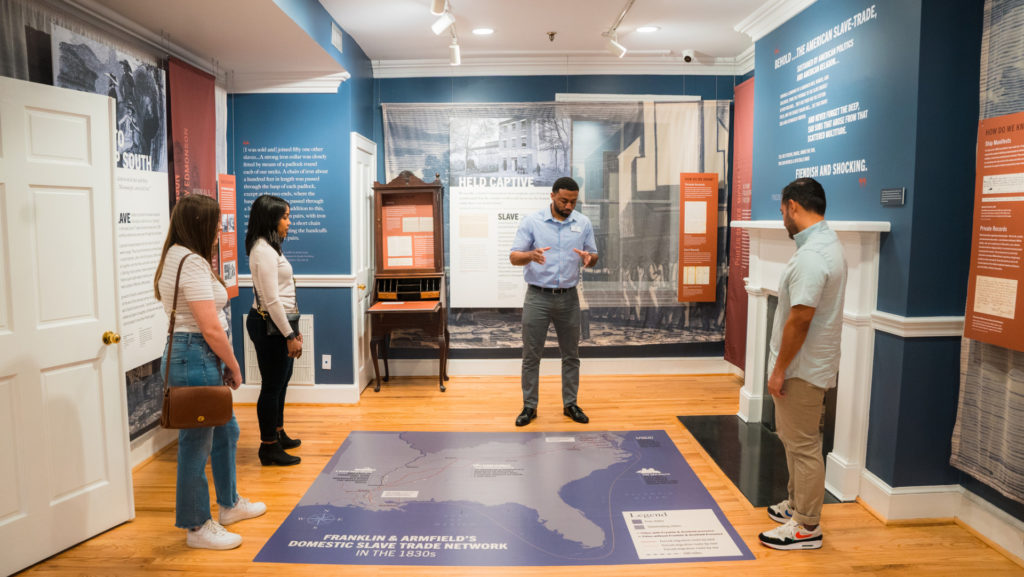
Freedom House Museum at 1315 Duke Street reopened in spring 2022 with three new exhibitions showcasing Alexandria’s Black history and the Black experience in America. The National Historic Landmark is what remains of a large complex dedicated to trafficking thousands of Black men, women and children between 1828 and 1861. The museum honors the lives and experiences of the enslaved and free Black people who lived in–and were trafficked through–Alexandria. Freedom House Museum seeks to reframe white supremacist history and provide visitors opportunities to learn, reflect and advocate for change.
3. Wander the Waterfront Along the African American Heritage Trail

Trace Alexandria’s past with a riverside ramble. The self-guided waterfront African American Heritage Trail highlights the people, places and neighborhoods along the Potomac, from the time of Alexandria’s founding through the 20th century. Pull up the StoryMap on your phone as you walk the 11-stop trail, beginning at Waterfront Park and making your way northward. Immerse yourself in the history of the Torpedo Factory, early Black neighborhoods like Fishtown and The Berg, a glass factory intertwined with the child labor law movement and more. This project was developed as a volunteer community initiative with support from the Office of Historic Alexandria. Look for a southern waterfront route coming soon in 2023.
4. Stop by an Integral Site for Legalizing Interracial Marriage
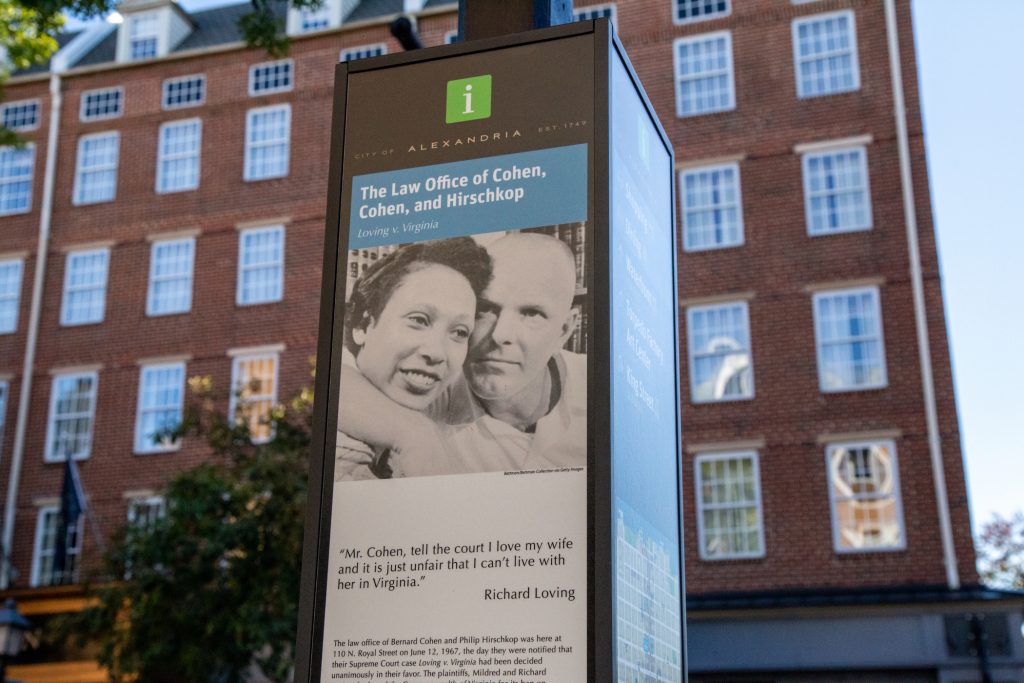
Head to the corner of King and N. Pitt St. in the heart of Old Town Alexandria to find a new mini kiosk commemorating the 1967 Loving v. Virginia Supreme Court decision, which legalized interracial marriage throughout the United States. The law firm Cohen, Hirschkop & Hall represented Mildred and Richard Loving from their former 110 N. Royal St. office, around the corner from the marker. Then, watch the 2016 film Loving, filmed around Virginia, to see their moving and monumental story come to life.
5. Walk the Duke Street Black History Trail

Old Town’s Duke Street corridor is rich with historical significance, embedded with narratives and markers galore for the eagle-eyed passerby. Begin your “Great Walk” at Erik Blome’s Edmonson Sisters sculpture, a tribute to two teenage sisters who attempted escape from slavery, were captured and held in Alexandria’s Bruin Slave Jail, and later becoming vocal abolitionists alongside the likes of Frederick Douglass. End at the African American Heritage Park, whose centerpiece is a bronze tree sculpture onto which artist Jerome Meadows carved the names of African American citizens and sites.
6. Embark on Manumission Tour Company’s New Underground Railroad Route
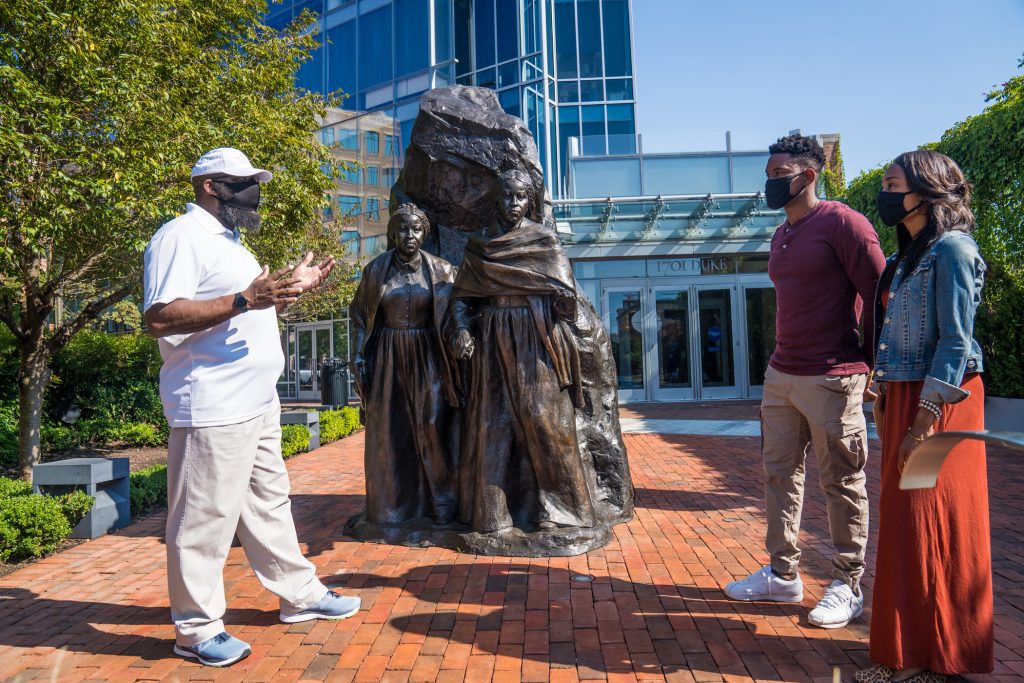
Book a spot on Manumission Tour Company’s route telling the story of enslaved Alexandrians who fled to freedom. The tour is based upon the writings of abolitionist William Still and his 1872 book, The Underground Railroad, which describes the enslaved people—including several from Alexandria—who used the Underground Railroad to escape to freedom through his Philadelphia safe house and on to Canada. This tour covers where in Alexandria they may have lived and worked, when and how they escaped, and who may have helped them. Don’t miss the tour company’s additional “Freedom’s Fight in Alexandria” and “Duke Street Black History” routes.
7. See Wrought, Knit, Labors, Legacies at Its Temporary Location
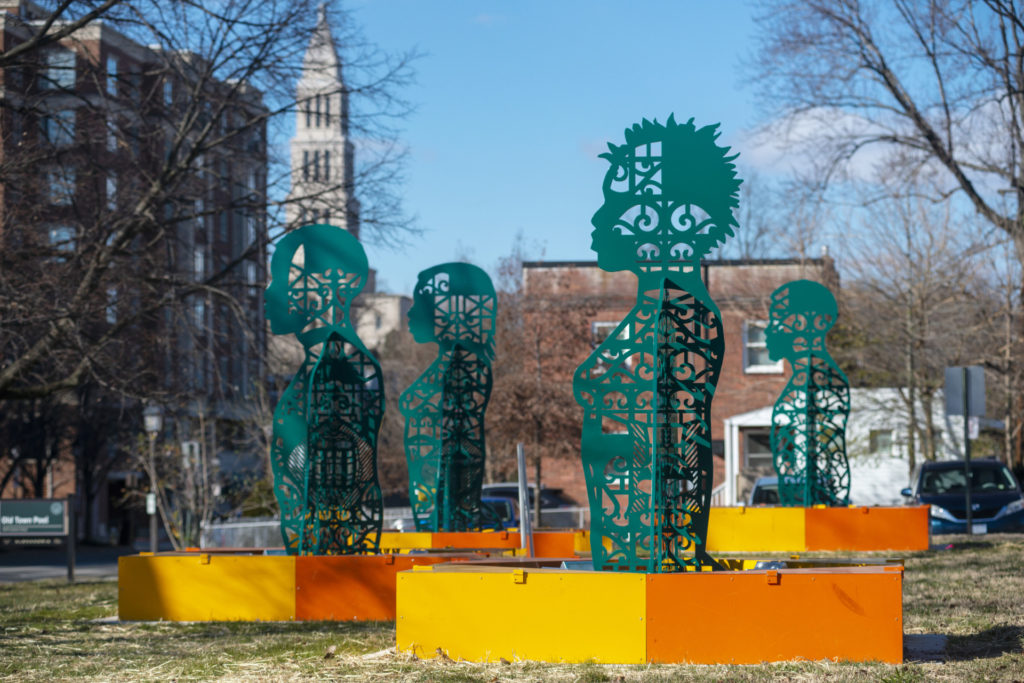
The four ornate figures from Wrought, Knit, Labors, Legacies, by Olalekan Jeyifous, have found a temporary home at 1609 Cameron Street, following the conclusion of the installation’s 2020 waterfront tenure. The second of the City of Alexandria’s “Site See: New Views in Old Town” annual public art series frames Alexandria’s African American history through the lens of the city’s industrial and merchant history from the 17th to 20th centuries. Once a prosperous port city and manufacturing hub home to one of the largest domestic slave trading firms in the country, Alexandria’s early economy was inextricably tied to the work of enslaved and free African Americans.
8. Learn About the NBA’s First Black Player
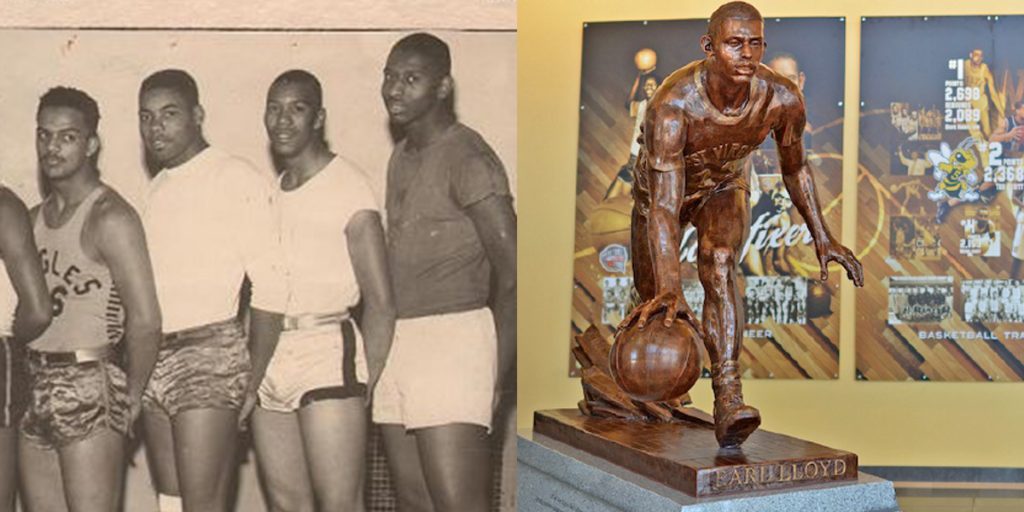
Images Courtesy of the Alexandria Black History Museum and African American Hall of Fame
On October 31, 1950, Earl Lloyd made his NBA debut as the league’s first African American player to play in game. In October 2020, the City voted to re-name the 1000 block of Montgomery St., part of the Parker-Gray neighborhood, “Earl F. Lloyd Way.” In spring 2021, his statue was unveiled at the former site of his alma mater, Parker-Gray High School. Now the Charles Houston Recreation Center and home to the Alexandria African American Hall of Fame, Parker-Gray High School opened 100 years ago to serve the city’s African American students during segregation, including Earl Lloyd, a class of 1946 graduate.
9. Honor Alexandria’s Lynching Victims

Learn the stories and say the names of Alexandria’s lynching victims, Joseph McCoy and Benjamin Thomas. Joseph McCoy is buried at Penny Hill Cemetery and Benjamin Thomas was reinterred to Douglass Cemetery. The City has begun the process of claiming Alexandria’s lynching pillar from the National Memorial for Peace and Justice in Montgomery, Alabama.
Learn more and find additional Black history sites to explore here.
Header Images Credits, left to right: Misha Enriquez for Visit Alexandria; Instagram user @sharpandsoundstyle; Washington Tribune, August 26, 1939. Courtesy of the Alexandria Black History Museum
